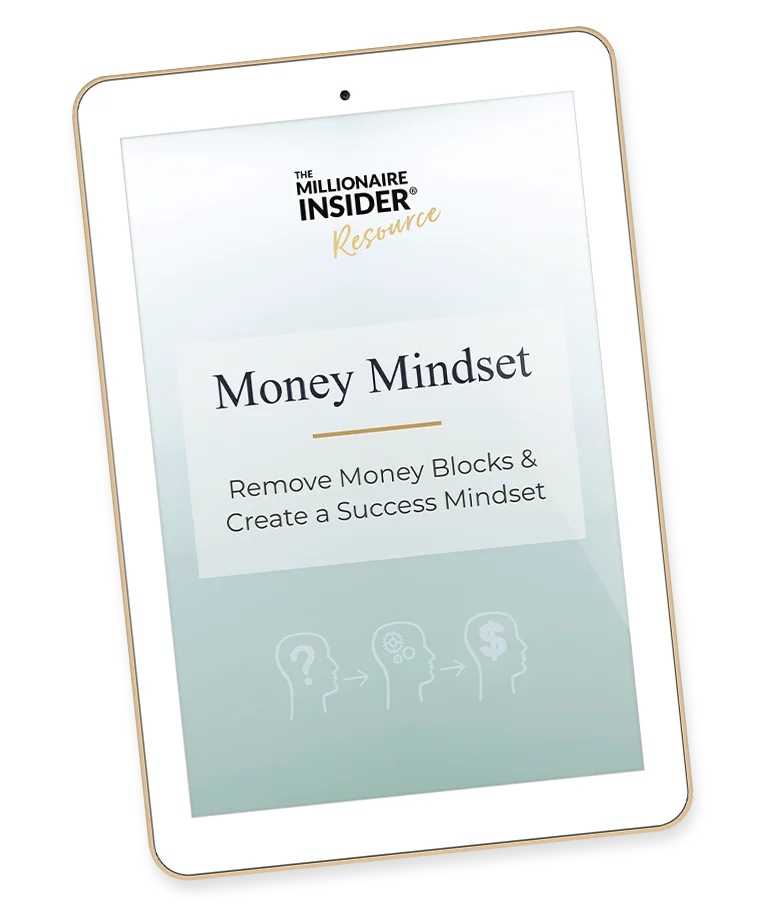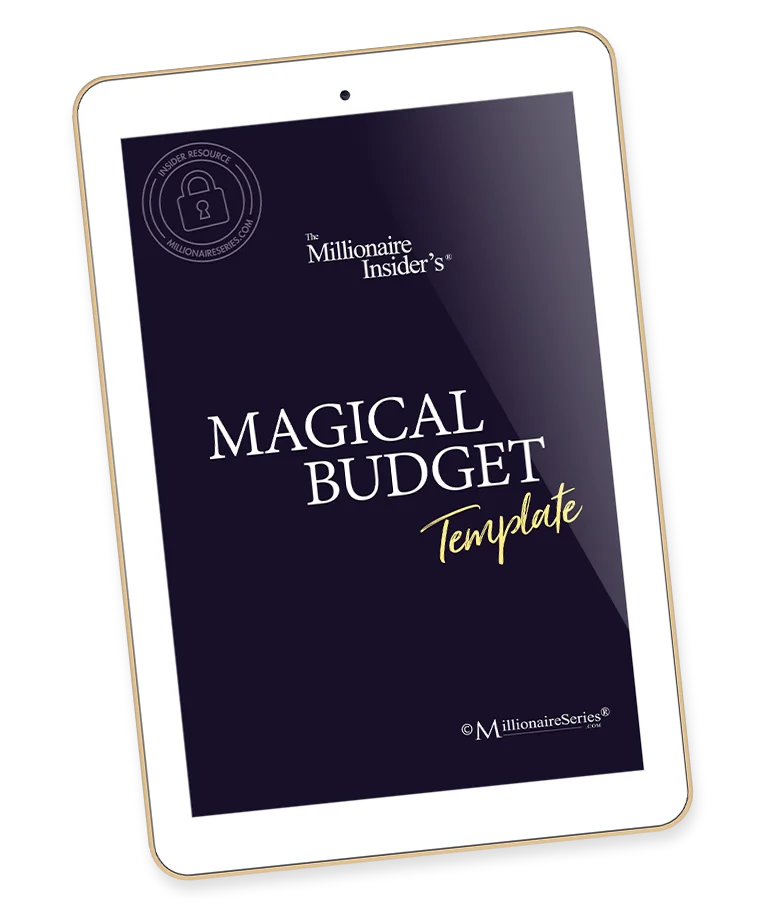Updated April 18th, 2023
Achieving financial freedom requires managing your cash flow and controlling your finances. The first step is to learn how to create a budget.
The first step to creating a successful financial plan is to get a handle on your finances.
And while most people think sticking to a budget is as fun as dieting, it doesn’t have to be something you dread.
Here’s a glance at this episode…
[2:48] The Magical Budget that works for the wealthy and those on their journey
[4:39] Examples of the different types of income
[5:33] The different types of expenses
[7:44] The process of determining your wants and needs
[11:00] What to do if you have a hard time creating a spending plan
[14:40] Review of the budgeting process
Disclosure
All materials and intellectual property are copywritten by MillionaireSeries.com®.
This information is for educational purposes only. It is not intended to replace any advisor or specialist or provide any investment, financial, tax, retirement, planning, or healthcare advice.
By reading this, you agree to hold MillionaireSeries.com® and its affiliates harmless for results achieved or not achieved.
What is a Budget?
A personal budget is a plan for managing your money and staying on track to achieve your financial goals. It will help you track your spending and income and pay off debt.
By managing your money, you will know what you earn and what you spend. This will put you in the driver’s seat of your life. It also removes the fear, worry, and anxiety that often accompany the topic of finances. The result is a richer and more fulfilled life!
An effective budget will show you how to:
- Manage your cash flow
- Reduce debt
- Stop overspending
- Better handle your finances
- Track variable expenses and net pay
- Adjust your budget if something changes
- Identify your spending categories
- Create a budget so that managing your money is easier and even fun
- Remove money blocks and fears about finances
- Avoid beliefs and myths about wealthy people
- Monitor and understand the different sources of wealth
- Make a budget that works for you
- Separate variable and fixed expenses, including “wants” versus “needs.”
- Set up and use The Millionaire Insider’s® Magical Budget so you can get into the driver’s seat of your finances
How to Make a Budget in 5 Steps

1. List Income From All Sources
This includes wages from your spouse’s job, earnings from a home-based business, side-hustles, affiliates, joint ventures, dividend and interest income from your investments, retirement income, rental income, royalties, and any other sources of income you generate. Remember to include nontaxable sources of revenue, such as gifts from relatives or friends.
The goal is to determine your monthly income. If some of the income you list is inconsistent, calculate the average monthly income you earned last year. Update this value if your income changes.
2. List Your Expenses
Now that you know what income you have coming in each month, you must determine what you are spending.
In The Millionaire Insider’s® Magical Budget, we break expenses down into “needs” and “wants.”
Examples of “need expenses” include:
- Rent or mortgage
- Utilities
- Property taxes
- Home insurance
- Maintenance and repairs (if applicable)
- Medical insurance
- Car payments
- Auto insurance
- Gas
- Maintenance
- Other insurance payments (Remember to include all payments made throughout the year, i.e., quarterly or annually!)
- Daycare expenses
- Income taxes (If you pay them, they are not taken out of your earnings.)
Examples of “want expenses” include:

- House cleaning
- Clothing
- Beauty
- Furnishings
- Personal care and cash (pocket money you carry with you)
- Dining out
- Entertainment
- Gifts
- Food
Let me guess; you are saying, “What?” Why would food be a “want expense” and not a “need expense?” The expenses for food essentials are a need.
That said, most people blow their budget on food, entertainment, clothes, and beauty, so we included it as a want. This will help you pay attention to the amount you are spending on expenses that can wreak havoc on your budget.
For some of us working moms, when we see cleaning the home as a want, we roll our eyes! And yes, I agree, but this is a want expense. If you meet your savings goal and can afford to pay your cleaner from cash flow, hiring a cleaner gets the green light.
3. Determine Your Net Profit
I can already hear, “But, I am not good with money, numbers, or financial matters.”
Take the sum from all sources of income and subtract the sum of all your expenses. Examples of expenses may include credit card debt payments, medical bills, etc. If you are not sure on what you are spending review your monthly bank statements and credit card statements.
Some experts recommend tracking everything you spend each day. This can be helpful if you have a tendency to overspend or have no idea where you spend your money. It will also help you determine your net income (income less expenses).
If you do not have a net profit, do not worry. In the Money Mindset Makeover program, the goal is for you to earn more money and have money left over after paying all your bills.
4. Allocate Your Money

For over 30 years, I have been teaching millionaires and broke people how to create a budget. I have tested literally every spending plan available and finally developed one that works wonders. That is why I refer to it as “The Magical Budget.”
The reality is that everyone must have a spending plan, even billionaires. And while they can buy more stuff than most people, they still must choose how they spend their money.
The Millionaire Insider’s® Budgeting Made Easy strategy inside of The Money Mindset Makeover helps you if you need help budgeting or want to manage your money (so you don’t have to worry about running out of money!).
Let’s review the steps to allocate your money:
1. Each day, write down the income you generate.
This includes every penny! I know this may sound like overkill, but because of this exercise, I initially doubled my income.
Then a year later, I tried it again and hit my income goal every month. So, before you judge it, try it!
2. Deposit income from all sources into your savings account.
Every penny you earn gets deposited into your savings account.
3. Transfer the total from your “needs expenses” to your checking account.

Next, set up all the expenses on your “needs expense” on auto-pay from your bank account.
4. Determine what is left over.
If that is part of your plan, determine how much you have left after funding your emergency reserve, savings, investment, retirement accounts, and extra mortgage or car payments.
Then determine how much you have been spending for the “want expenses.”
If you have a tendency of overspending or you do not have experience managing your spending plan, write down everything you purchase so you can keep track of your money.
Confirm that “want expenses” are less than what is left over.
This cash will be used to pay “want expenses.”
If you have extra money due to this process, spend it as you like.
5. Evaluate and Monitor Your Progress and Make a New Budget if Anything Changes
While your budget shouldn’t change too much, if it does, create a new allotment for the next month.
Conclusion – “How to Make a Budget”
1. Follow the Budgeting Made Easy process.
2. Be flexible and plan for unexpected events.
3. Create a simple budget, so it is easy to implement.
4. Deposit all cash into your savings account.
5. Pay all “need expenses” from your checking account.
6. Pay all “want expenses” in cash
7. Have fun and celebrate small wins
Until our next episode, take one action that will help you create a secure financial future and retirement you love.
Follow and Subscribe
If you love the content, please open the Apple Podcast on your iPhone. Scroll down to the bottom, click five-star review and leave a review. We really appreciate it.
Click here to follow and leave a review.
Click here to get your free financial checkup:
Thank you so much for joining me for
“How to Make a Budget in 5 Steps.”
I’m Annette Bau (Bah oo).
All international copyrights are reserved.
Bye for now.


